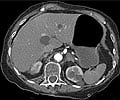Smoking in public places in UK will stand banned from July 1. But it will have little impact in deprived areas where smoking prevalence is 37%, compared to the national average of 24%.
The UK government is ambitious and confident. It hopes after the ban on smoking in public places comes into effect from July 1, the number of smokers in the country would come down dramatically, by as much as 600,000.
But anti-smoking campaigners are not so sure."The affluent in their smoke-free pubs and restaurants are likely to forget that, for most disadvantaged people, rates of smoking are still very high," says Deborah Arnott, director of Action on Smoking and Health (Ash). "Among the most deprived groups, three out of four families still smoke. It is the greatest single factor in the difference in life expectancy between the social classes."
The percentage of men who die under 70 ranges from 22% in the highest social class to 48% in the lowest social class, and around half this disparity is accounted for by higher smoking rates. In 2005, 32% of men and 29% of women in routine and manual occupations smoked, compared to 18% of men and 16% of women in managerial and professional occupations. The government hopes to reduce smoking to 21% among adults by 2010 and 26% in manual occupation groups. But with more resistance among lower socio-economic groups to quitting, this seems unlikely.
Ash has produced a map of England that shows the link between smoking and poor areas. Smoking rates vary from 52% in the most deprived ward in Knowsley, Merseyside, to just 12% in the least deprived ward in Rushcliffe, Nottinghamshire.
Andy Hall, Liverpool city council's public protection manager and chair of SmokeFree Liverpool, which lobbied for a city-wide ban, doubts the national legislation will help bring smoking rates in these areas in line with national figures. "The ban will reduce opportunities for everyone to smoke, but it is not going to tackle health inequalities," he says.
Chris Owens, head of tobacco control at the Royal Castle Lung Cancer Foundation, which delivers Fag End, a smoking cessation service in Liverpool, funded by the Primary Care Trust says: "The unfortunate truth is that in areas where more people smoke, people trying to quit are surrounded by friends and family who smoke, which can make quitting even more difficult." Fag End's community-based services are credited with helping most of the 17,500 Liverpudlians (4% of the local population) who have quit smoking over the last three years. But its 50% success rate is much lower in Speke, Breckfield and Granby - three of the most deprived wards in England.
Advertisement
The Department of Health has allocated £112m to PCTs for smoking cessation services over the next two years. This includes an additional £10m for PCTs based in the most disadvantaged areas.
Advertisement
He himself would try to quit. "If I'm working by myself, I can't afford to leave the bar unattended while I nip out for a smoke," he explains. "I don't really have a choice."
But that is not the point. Not all his customers are so keen: "Some have told me that they will go round each other's houses instead of coming here. I expect a couple of clubs in the area will have to close," he says.
And worse, he adds, “ I've been told I'll get a £250 fine and the business will be fined £2,000 if anyone is found smoking here. But what happens if someone comes in and I don't see them, or if I've got to tell a dozen big lads to put out their cigarettes or leave?"
Source-Medindia
GPL/M











